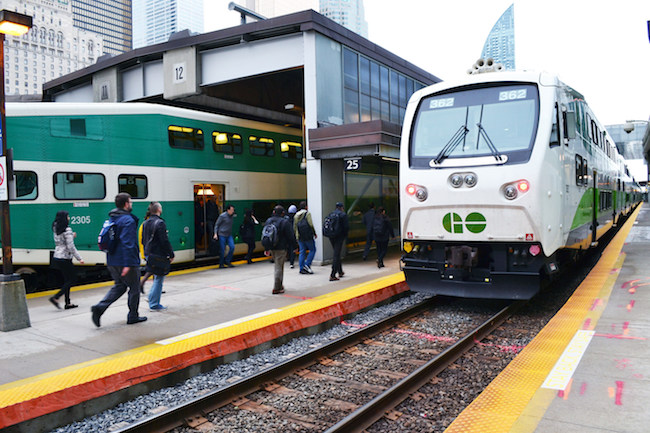
Work starts on major Ontario rail project that requires tunnelling under 21 lanes of Hwy. 401 interchange
By David Kennedy
ConstructionThe new twin tunnels will extend approximately 175 metres under the packed Toronto highway, helping GO Transit increase capacity on its Kitchener line

The tunnel project is part of a GO Transit’s expansion that aims to turn what is currently a commuter rail network into a two-way, all-day rail service. PHOTO: Canada Infrastructure Bank
TORONTO—Construction crews at a job site just east of Toronto’s Pearson International Airport have their work cut out for them. For the next two years, they’ll be digging a pair of tunnels under Canada’s busiest highway at what’s nearly its widest point.
Crews from EllisDon Corp. and the Canadian arm of Austria-based Strabag SE, are in charge of construction on the $116.9 million effort to build the twin rail tunnels under Ontario highways 401 and 409. Officials from Infrastructure Ontario and transit agency Metrolinx were at the Toronto job site July 26 to officially kick off construction on the project, which is part of GO Transit’s multibillion-dollar Regional Express Rail (RER) initiative.
Supplementing an existing tunnel wide enough for three tracks, the new tunnels will extend approximately 175 metres, far enough to get them under all 21 lanes that make up the 401/409 interchange in Etobicoke. Each new tunnel will add a single track, helping GO Transit increase train capacity on its Kitchener Corridor.
Along with EllisDon and Strabag on the construction side, the consortium taking on the job includes of WSP Canada Inc., Dr. Sauer & Partners and Amec Foster Wheeler, which are responsible for the design.
“Constructing under one of the busiest stretches of highway is no easy task, but by working with Toronto Tunnel Partners, we are excited to use innovative engineering techniques for tunnelling that will allow us to bring more trains and more service to customers faster, giving them the service they need to get them to where they need to go,” said Stephanie Davies, executive vice-president for the GO Expansion at Metrolinx, in a release.
To build the tunnels, crews are employing the sequential excavation method (SEM) — also known as the new Austrian tunnelling method — Metrolinx said. Unlike tunnel boring machines, which typically move only forward and install concrete segments behind them to support the tunnel walls, the SEM technique uses excavators or roadheaders to dig out small sections that are then stabilized with shotcrete. This basic sequence is repeated until the entire length of the tunnel is complete.
Along with the tunnels, the multimillion-dollar project includes work on the footings and retaining walls that support one of the highway ramps above ground and the installation of rail signalling and communications infrastructure.
The overall goal of GO Transit’s RER project is to transition what is currently a commuter rail network into a two-way, all-day rail service. Increasing the number of tracks ducking under the 401/409 interchange is one critical component.
Work on the tunnel project is scheduled to be complete by late 2021.




